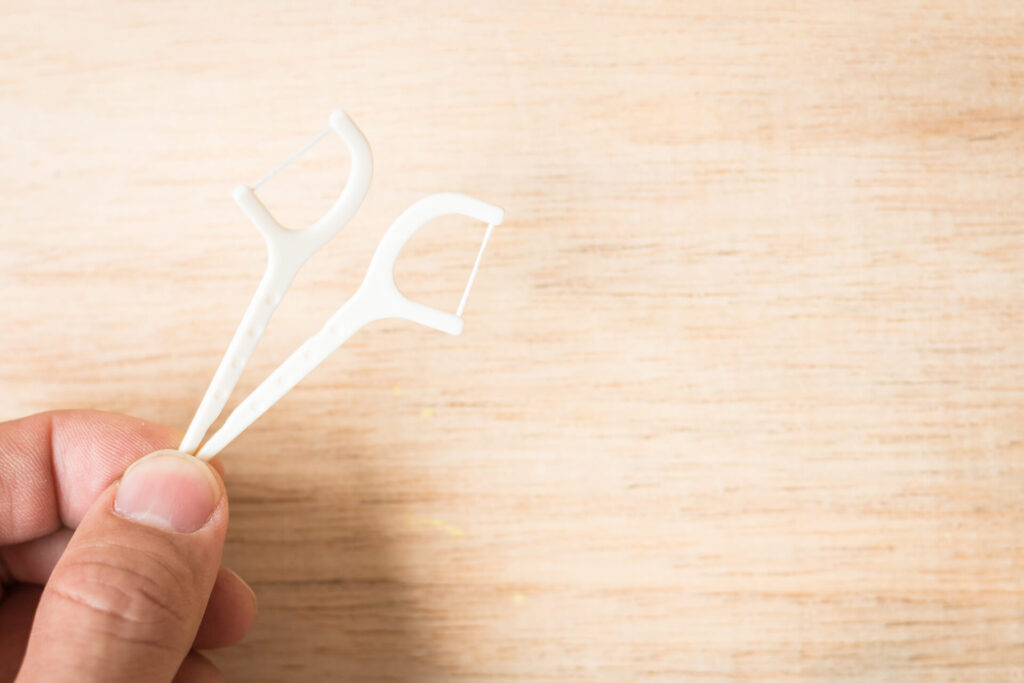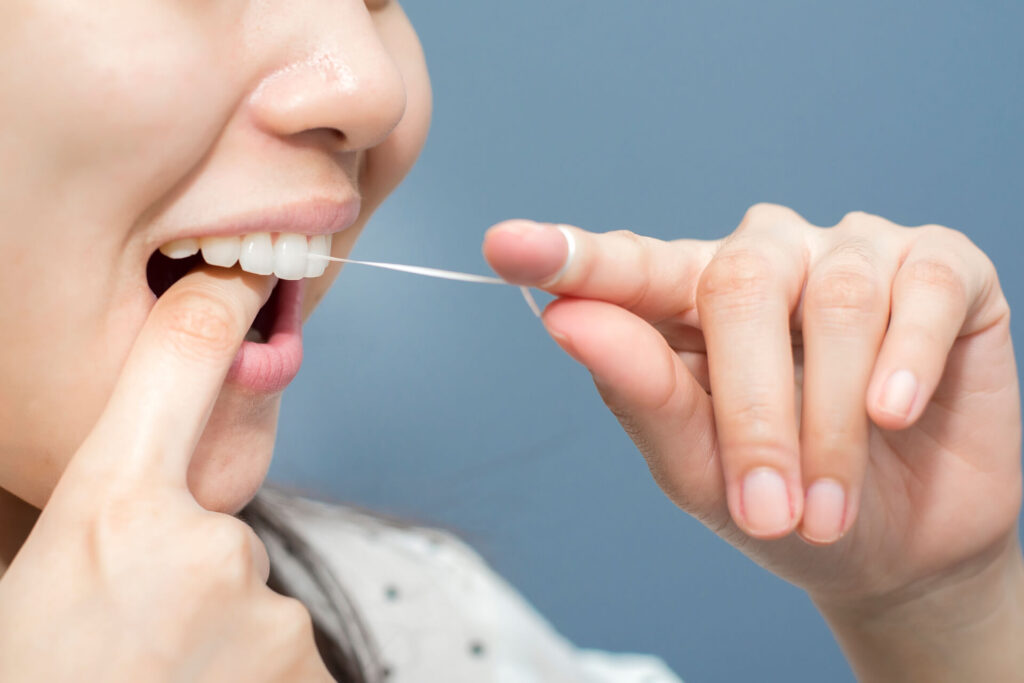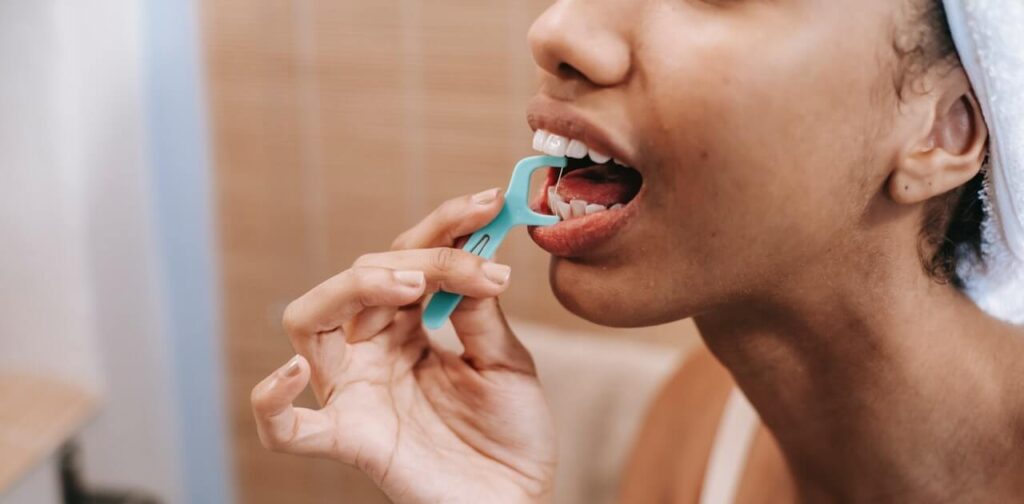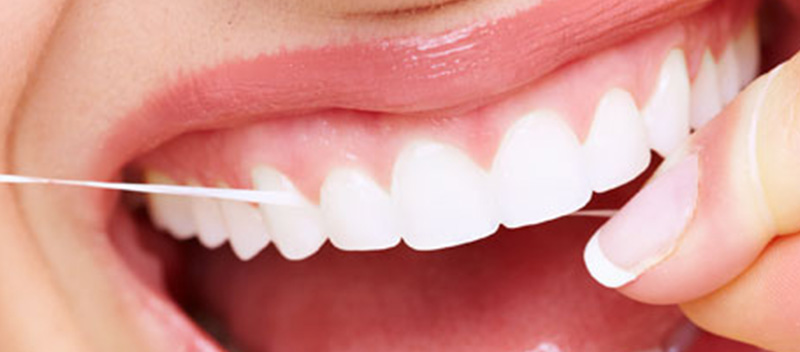Many people see flossing as an “optional” step, but you should be flossing at least as often as you brush. You may find water piks to be a useful alternative instead of traditional flossing.
Why Do I Need To Floss?
Even if you have the perfect brushing technique, flossing can still help your teeth a great deal. Certain foods can get stuck quite easily between your teeth, these foods can even cause physical damage. Hard foods like nuts, can potentially cause your teeth to break and chip. Flossing can help pick these food particles from between your teeth to relieve any extra pressure.
What Does Flossing Do?
Flossing has many benefits:
- Removes food particles stuck between teeth.
- Will reach places a toothbrush can’t.
- Can remove food you can’t see.
The only downside to flossing is if you have bad technique and you injure your gums by poking them with the floss. Your gums are very vulnerable so you will need to be very careful.

How Do I Floss?
- For traditional floss, break off up to 24 inches (two feet) of dental floss.
- Pinch the floss between your thumb and forefingers.
- Thread the floss between your teeth and move it up and down.
- Touch the side of each tooth and the gum with the floss.
- Use a clean section of floss for each new tooth.
Tips: Do not floss too hard or you could cause your gums to bleed. If you’ve never flossed before or did it infrequently, your gums may bleed due to the irritation. This is a sign you may need better oral care.
How Do I Floss With Braces or A Dental Bridge?
Oral care can suffer for patients who have orthopedic devices because it can make your oral care routine more difficult. If you do have dental braces or a dental bridge, you will need to buy specialty floss. This floss has a waxed end so it can be pushed through smaller spaces more easily. You can also buy floss picks, these have a handle on them to make them easier to operate.
- For specialty floss, break off up to 24 inches.
- Take the waxed, stiff end, and gently thread it between the braces.
- Move it back and forth a few times.
- Pull it out and repeat for every new tooth.

Are there different Types Of Dental Floss?
Dental floss has been around for quite a while so there are a lot of available options to choose from. You may find one type of floss easier, depending on how your teeth are positioned, and which floss is easiest for you to grip.
Different types of floss include:
- Standard floss: A thin strand of nylon with no special properties. It comes flavored or unflavored, as well as waxed, or unwaxed. This is generally the floss most people will start with.
- Dental tape: A wider flatter version of dental floss. Useful for wider gaps between the teeth.
- Supper floss: Each piece of floss will have a harder, stiffer end to it to make it ideal for fitting between dental appliances. These will be precut, and will often be more expensive than regular floss.
- Dental picks: These devices usually consist of a disposable handle that has a small section of floss to use for your teeth. They may also have one end for flossing, and one end for “picking”.
How Often Should You Floss?
Flossing should be a regular part of your dental routine. It’s even recommended that you carry extra floss, or dental picks around with you just in case you get something stuck between your teeth. If you floss often, it can greatly help with gum disease. If a piece of food gets stuck between your gums they can get irritated pretty quickly. Depending on how bad the irritation is, they can swell up within hours. If you go to sleep without flossing, you run the risk of letting the irritation affect your gums all night. In the morning you may experience sore painful gums due to a lack of flossing.

Should I Brush Or Floss First?
It doesn’t matter which order you do it in, as long as you floss regularly. It’s recommended that you floss first to help loosen food particles from your teeth so they can be cleaned by the toothbrush. However, if you floss after you brush, it is just as effective.
Can I Floss Too Much?
As long as you are not damaging your gums with bad technique, then you can floss as much as you want. If you have gum disease (gingivitis), you will want to floss as often as you can.

How To Use A Waterpik?
Waterpiks are useful since the fluid you use will get everywhere in the mouth. It is recommended that you add in mouthwash to the reservoir, so you can make it even more effective.
To clean your teeth with a waterpik do the following:
- Fill the reservoir with a solution of water and mouthwash.
- Plug in the device and turn it on.
- Adjust the pressure, if that is an option.
- Aim the nozzle at the gum line in between the teeth.
- Pause briefly between each tooth.
- Turn off the device and put everything away.
Waterpiks may not be as effective as flossing for removing food particles, but they can help clean parts of the mouth that you may have missed.
Oral Health Best Practices
You should be following a twice-a-day oral care schedule to take care of your teeth:
- Floss for 1-2 minutes
- Brush for 1-2 minutes
- Rinse your mouth with mouthwash
- Schedule regular dental checkups
